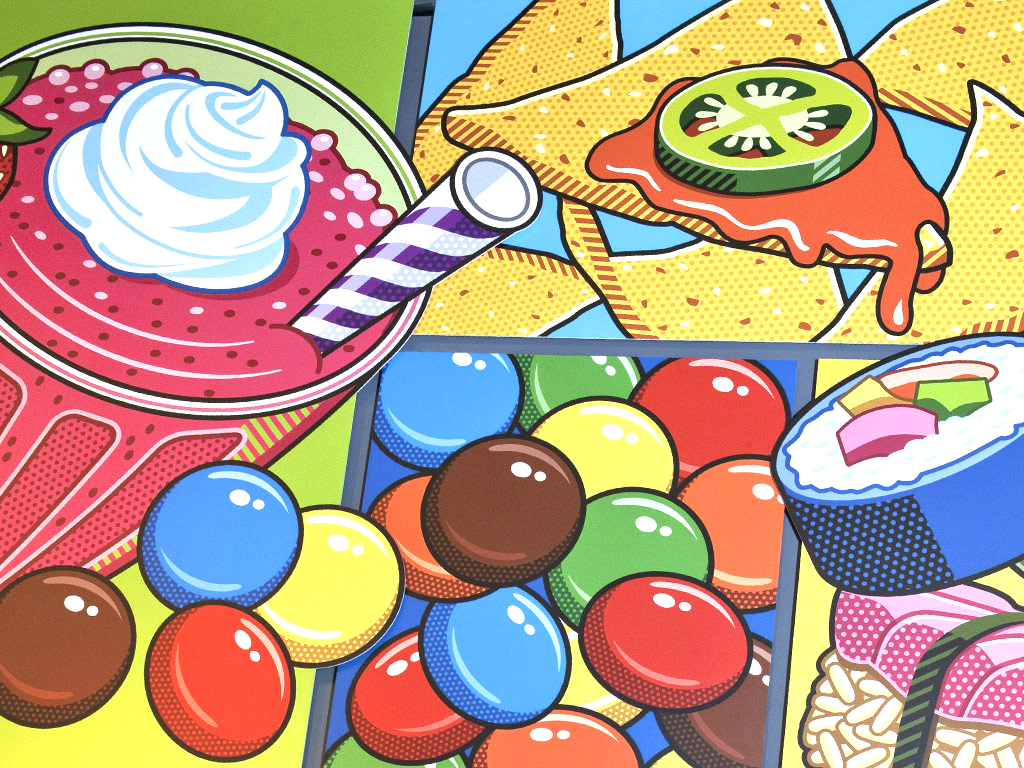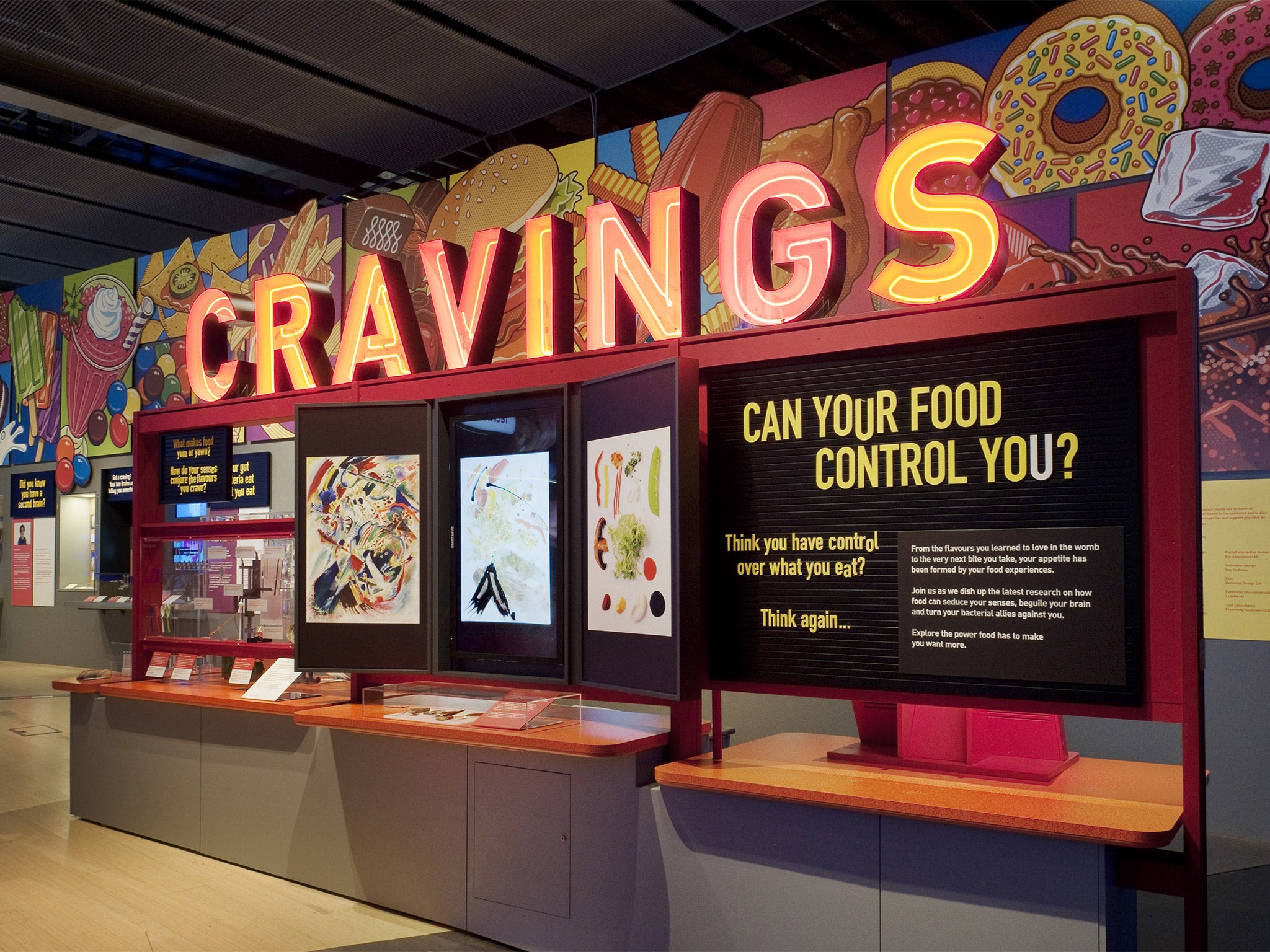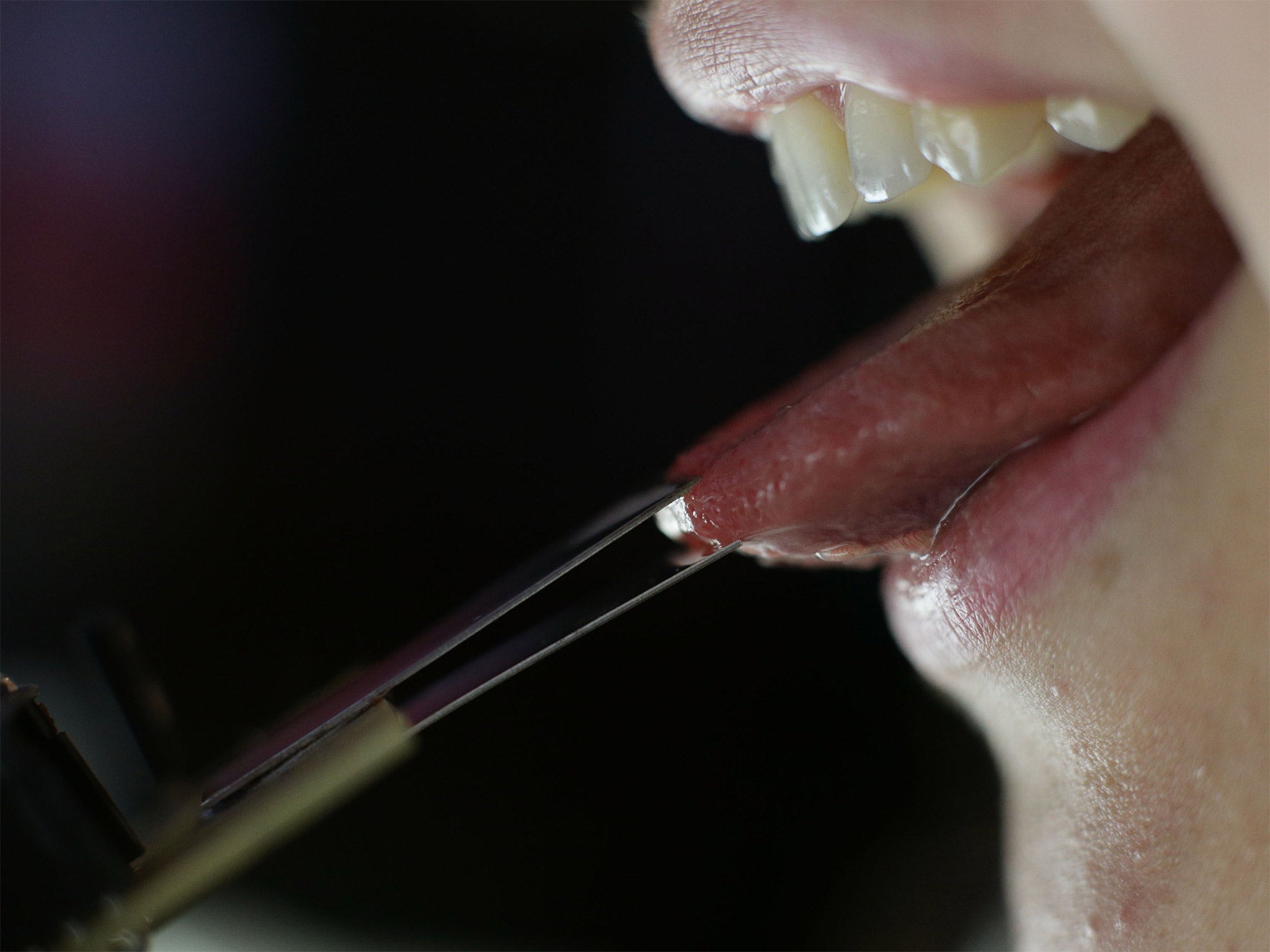Do you have a sweet tooth? Science Museum's new exhibition reveals it's all your mum's fault...
At the exhibition's preview, Gillian Orr discovers how we learn to yearn in the womb

Your support helps us to tell the story
From reproductive rights to climate change to Big Tech, The Independent is on the ground when the story is developing. Whether it's investigating the financials of Elon Musk's pro-Trump PAC or producing our latest documentary, 'The A Word', which shines a light on the American women fighting for reproductive rights, we know how important it is to parse out the facts from the messaging.
At such a critical moment in US history, we need reporters on the ground. Your donation allows us to keep sending journalists to speak to both sides of the story.
The Independent is trusted by Americans across the entire political spectrum. And unlike many other quality news outlets, we choose not to lock Americans out of our reporting and analysis with paywalls. We believe quality journalism should be available to everyone, paid for by those who can afford it.
Your support makes all the difference.It can come out of nowhere and ambush you at any time: an overwhelming desire for a burger, some salt and vinegar crisps or a Peperami (oh no, me neither. Revolting. Ahem). Whatever hankering sneaks up on you, a new exhibition at London's Science Museum aims to explain why certain comestibles can seduce your senses.
Cravings: Can Your Food Control You?, which opens tomorrow, is the museum's annual free contemporary show. Through personal stories and interactive displays, and by using cutting-edge science and technology, it explores how the brain, the "gut brain" and gut bacteria work together to control your snaffling desires.
"The official line is that it is aimed at teens," explains Ling Lee, Cravings' head of content. "But fundamentally, when we created this, we wanted it to be for anyone who's ever wondered where their cravings come from. Anyone who has ever had that argument with themselves: 'Should I or should I not?' We want it to be for people who love touching, smelling and tasting their food; those who lick things off plates."

One of the first things that greets me at the exhibition are some giant, pop art-esque packages of treats such as peanut butter and cookies. Each one was chosen by one of the students involved in the show, and explains alongside why they can't get enough of that particular snack. The colourful set-up lures me in much the same way that food does the brain. On closer inspection, they come with warning slogans dreamed up by the teens. "Once dopamine is released, the eating just won't cease," for example.
As the exhibition explains, our appetites are partly formed in the womb. To some extent, babies are born pre-programmed to certain flavours and tastes as a consequence of what their mothers ate while pregnant. A fan of carrots, for instance, will give birth to one (a fan, that is, not a carrot). And all mammals are born with a liking for sweet things because it is the predominant taste of their mother's milk. Adorable videos show baby bears, mice and humans smacking their lips and darting their tongues out in identical ways, which are both signs of pleasure. They might as well be feasting on Haribo.
Also, the offspring of mothers with high fat and sugar diets not only have a higher predisposition to obesity but a higher reactivity to substances that could be abused. Tests on sweet-toothed baby rats showed them more reactive to yummy food, alcohol and drugs – so you can now blame your mother entirely for your Krispy Kremes, Jack Daniels and speed habit.
Other out-of-control desires can be put down to your sense of smell, which is amazingly acute. You don't need to walk directly past a McDonalds to have a sudden urge for chips. You can pick up the smell of fat in your vicinity, even if you're unaware of it, that will trip switches in your brain and, before you know it, you're at the counter and "going large". An avoidance tip from Lee? Walk around sniffing a rose petal.

The show also tries to answer the question that anyone who has gone into double figures of Sunday roast spuds has asked themselves (again, not me): can you be addicted to food? Well, in a way, yes. Huge MRI scans on the wall reveal what happened to the brains of teenagers when they were fed chocolate ice cream. Those who usually had it as a treat revealed pyrotechnic explosions of activity. Those who ate it all the time had a tiny, sad little marking of pleasure on the scan, making them more prone to overindulge in the hope of regaining the kick that they once had.
There were plenty of other interesting facts to be picked up. Round plates make us think the food on them is sweeter, for instance. A copper spoon can make food taste bitter. Our tongues curve up in response to sweetness.
But then, with all the food chat, it all got a bit much and I found myself being lured to the museum cafe. Not that I had any control over the craving for a ham and cheese croissant, of course. It was – obviously – all subliminal.
Join our commenting forum
Join thought-provoking conversations, follow other Independent readers and see their replies
Comments